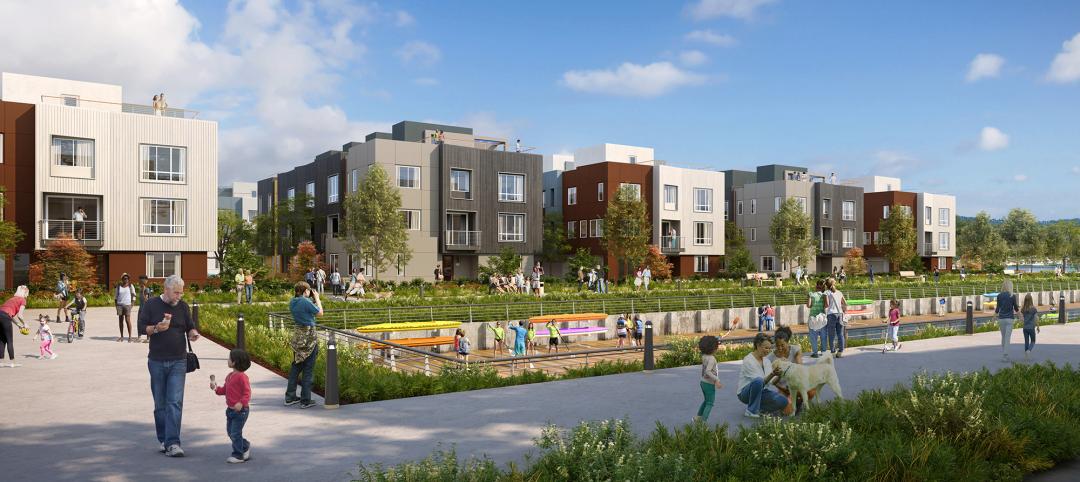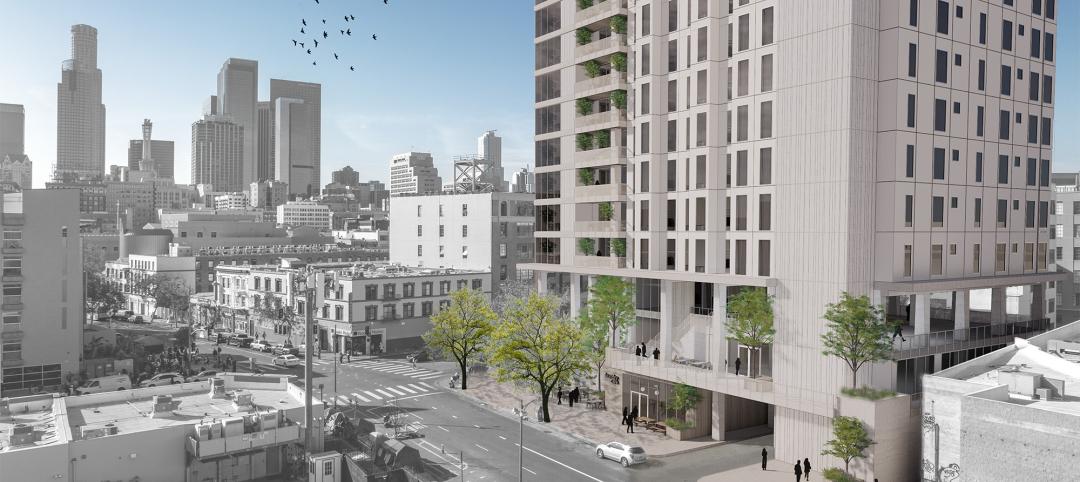Sustainability isn't just a concept in architecture; it's a guiding principle, one that every designer should lean into, especially as we celebrate Earth Month. As architects, we're tasked with not just designing visually appealing structures but also ensuring they're environmentally friendly, healthy for our occupants, and cost-effective. To achieve this, we must return to the basics of design and integrate holistic sustainable choices from the very beginning.
In my experience as an architect, LEED AP BD+C, WELL AP and sustainability focused practitioner, there are three early design decisions that are key to helping us build more sustainably: site selection, massing and orientation, and proper window-to-wall ratios.
1. Site Selection: The Foundation of Sustainable Design
Choosing the right site is about more than just aesthetics; it's about environmental impact and long-term resiliency. When selecting a site, we must consider its proximity to public transportation and amenities, whether it has been previously developed, and if it is vulnerable to extreme climate events, among other things. By choosing locations that support resilient and sustainable design, and provide ample opportunity for positive community impacts, we can improve our environmental effect by setting our projects up for success from the start.
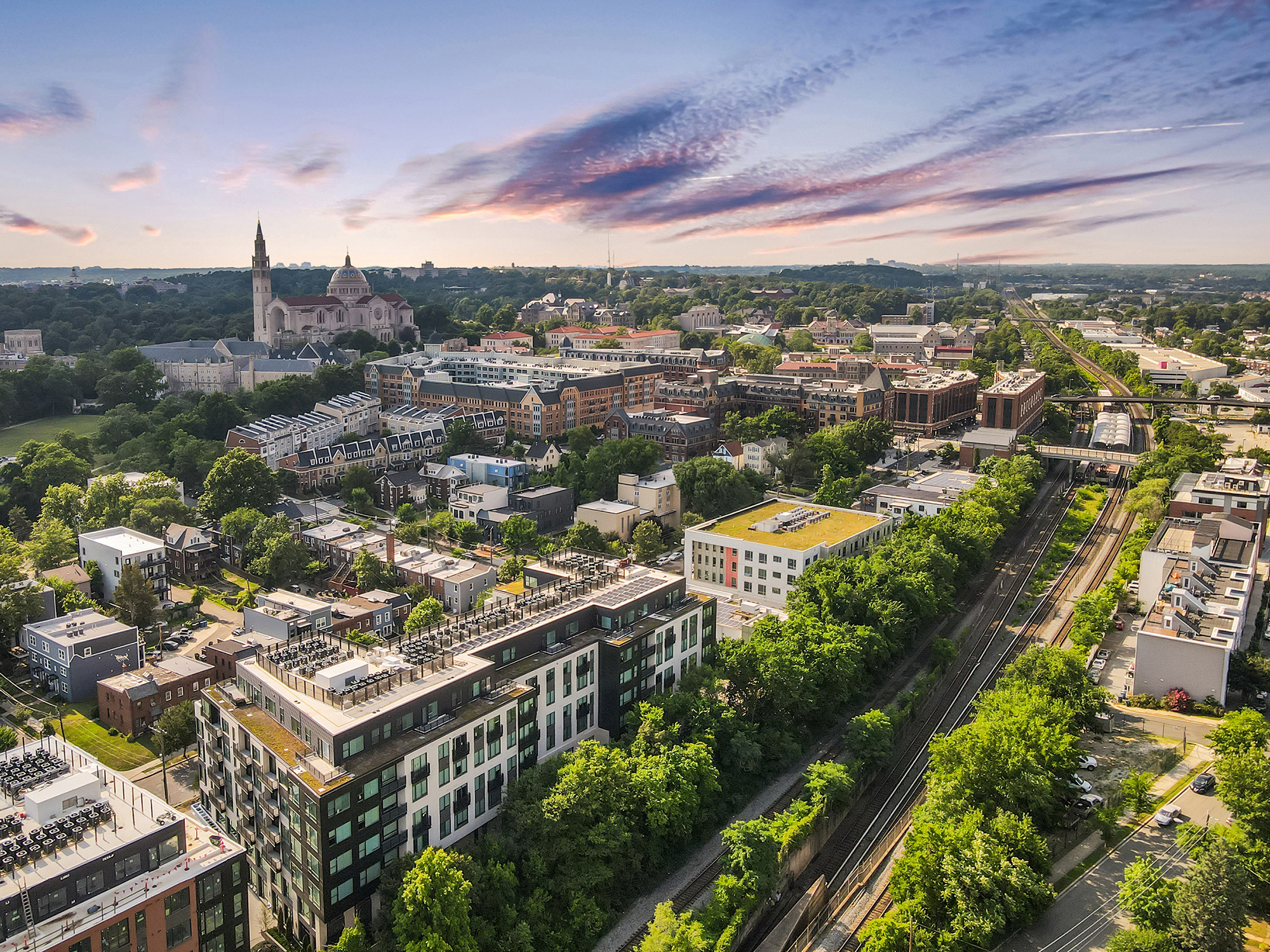
Strategically locating projects within walkable and transit oriented urban environments has a ripple effect beyond the building site. Hanover 8th Street is located just outside of the city core with close access to mass transit. This community in Washington, D.C. is walkable and connected to its surroundings through new pedestrian friendly sidewalks and plenty of open space. Residents can easily rely on active transportation and mass transit rather than personal automobiles, reducing transportation emissions and improving occupant well-being.
Preserving natural features, to a feasible extent, is crucial, even in urban environments. Mature trees, bodies of water, and unique topography contribute to the site's biodiversity and beauty. Incorporating them into our designs not only enhances the project's visual appeal but also minimizes disruption to established ecosystems. We must also identify risks such as flooding, soil contamination, or seismic activity. By spotting risks early on, we create spaces and buildings that are safer for our occupants, resilient to unforeseen events, and less costly throughout their lifecycle.
2. Massing and Orientation: Harnessing the Power of Form and Placement
The way we shape and position our buildings has a profound impact on their energy performance and occupant comfort. Passive solar design, for example, is the thoughtful orientation of buildings to optimize solar exposure. It reduces the need for artificial lighting, improves mechanical heating and cooling efficiencies, and maximizes renewable energy possibilities. Understanding prevailing wind patterns allows us to incorporate features like windbreaks and natural ventilation strategies, improving indoor air quality and reducing energy consumption.
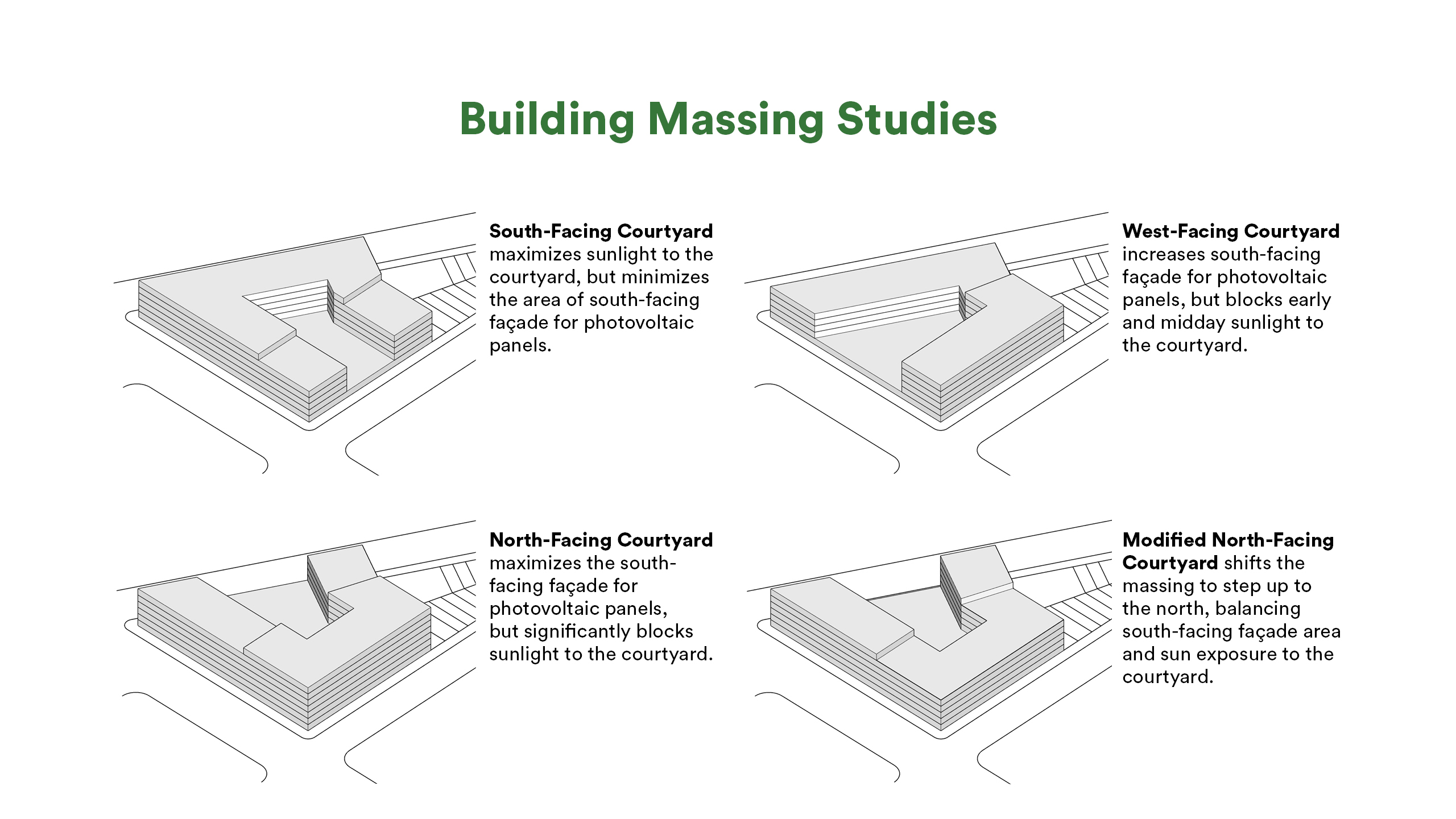
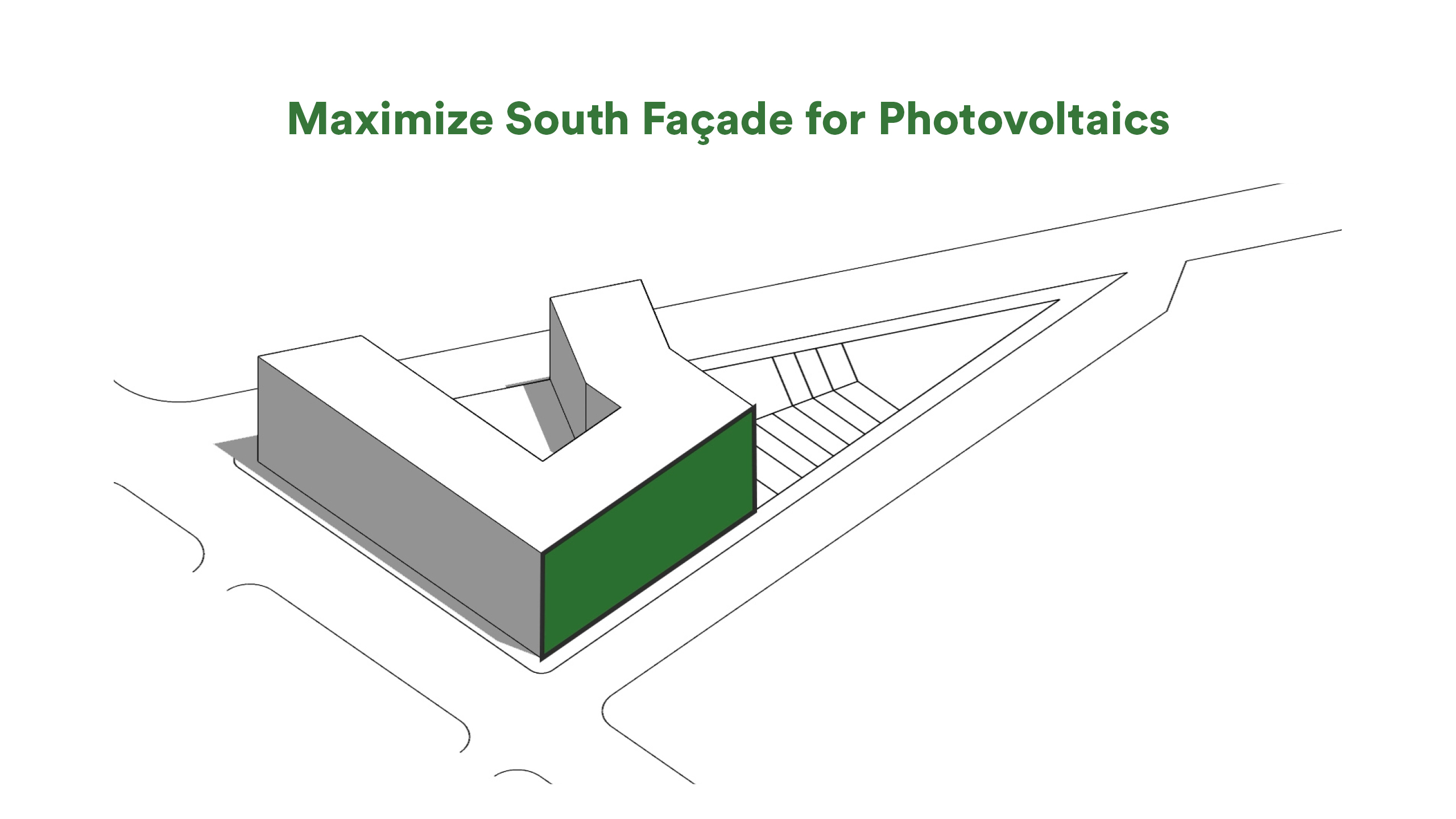
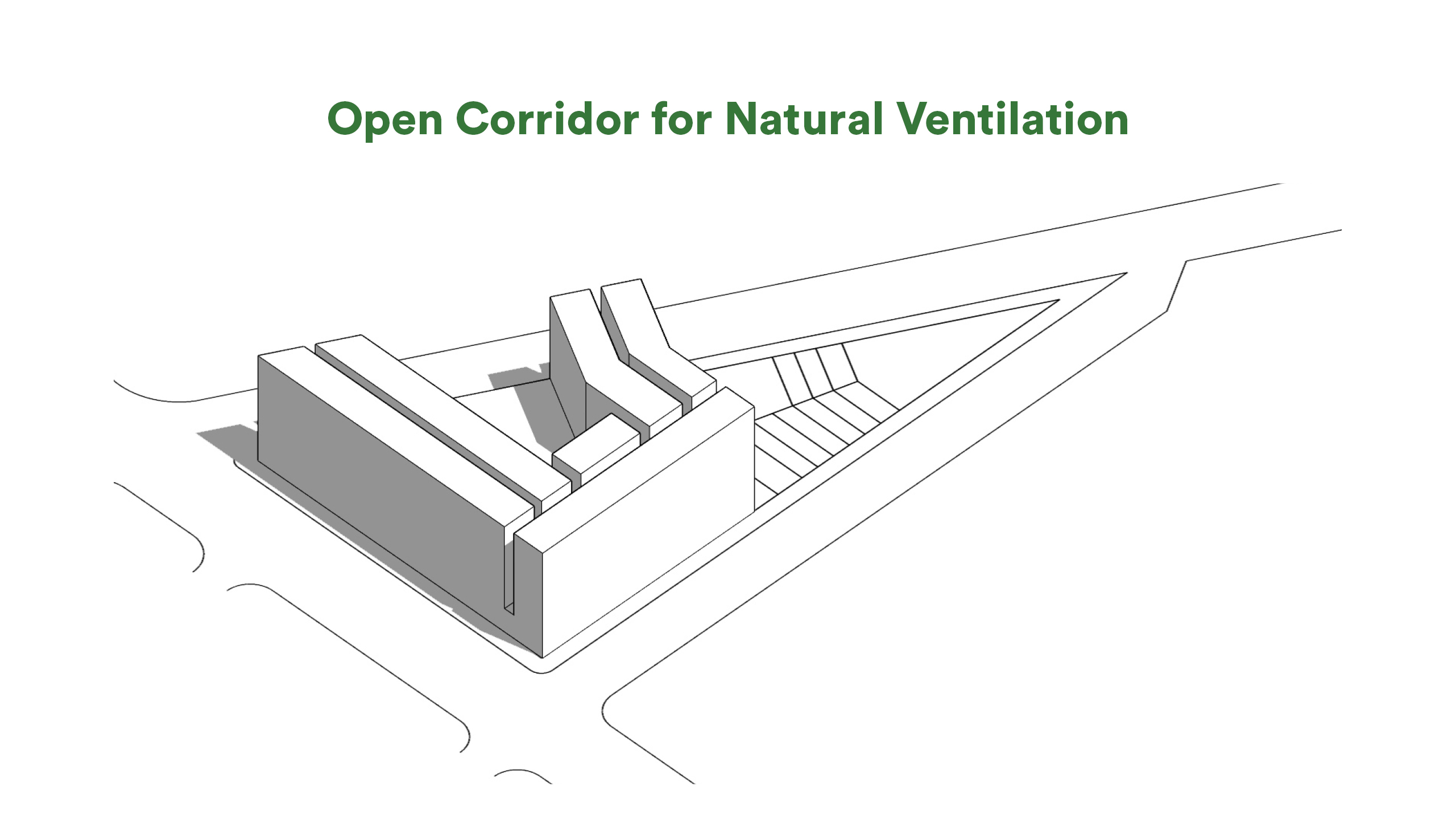
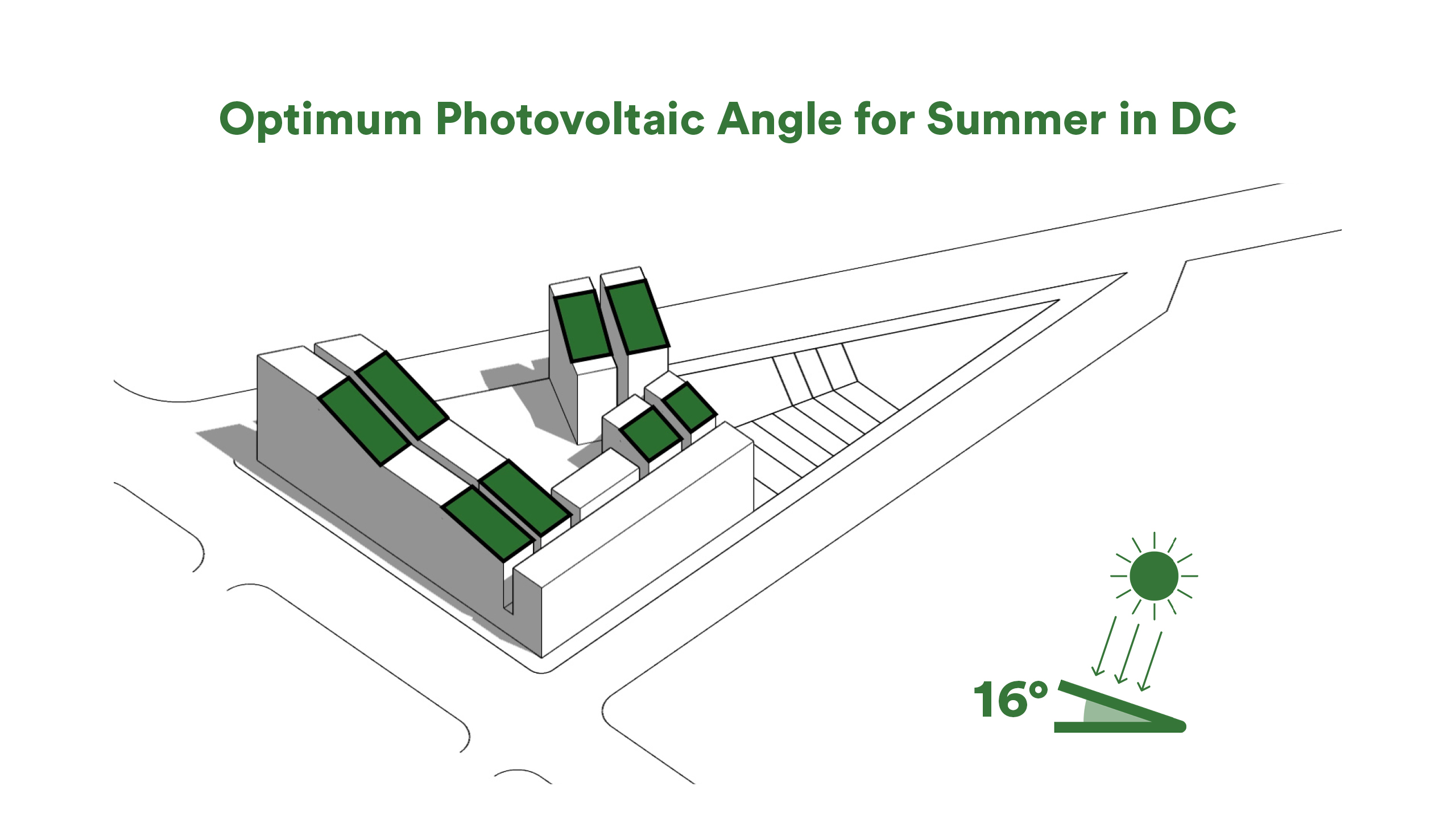
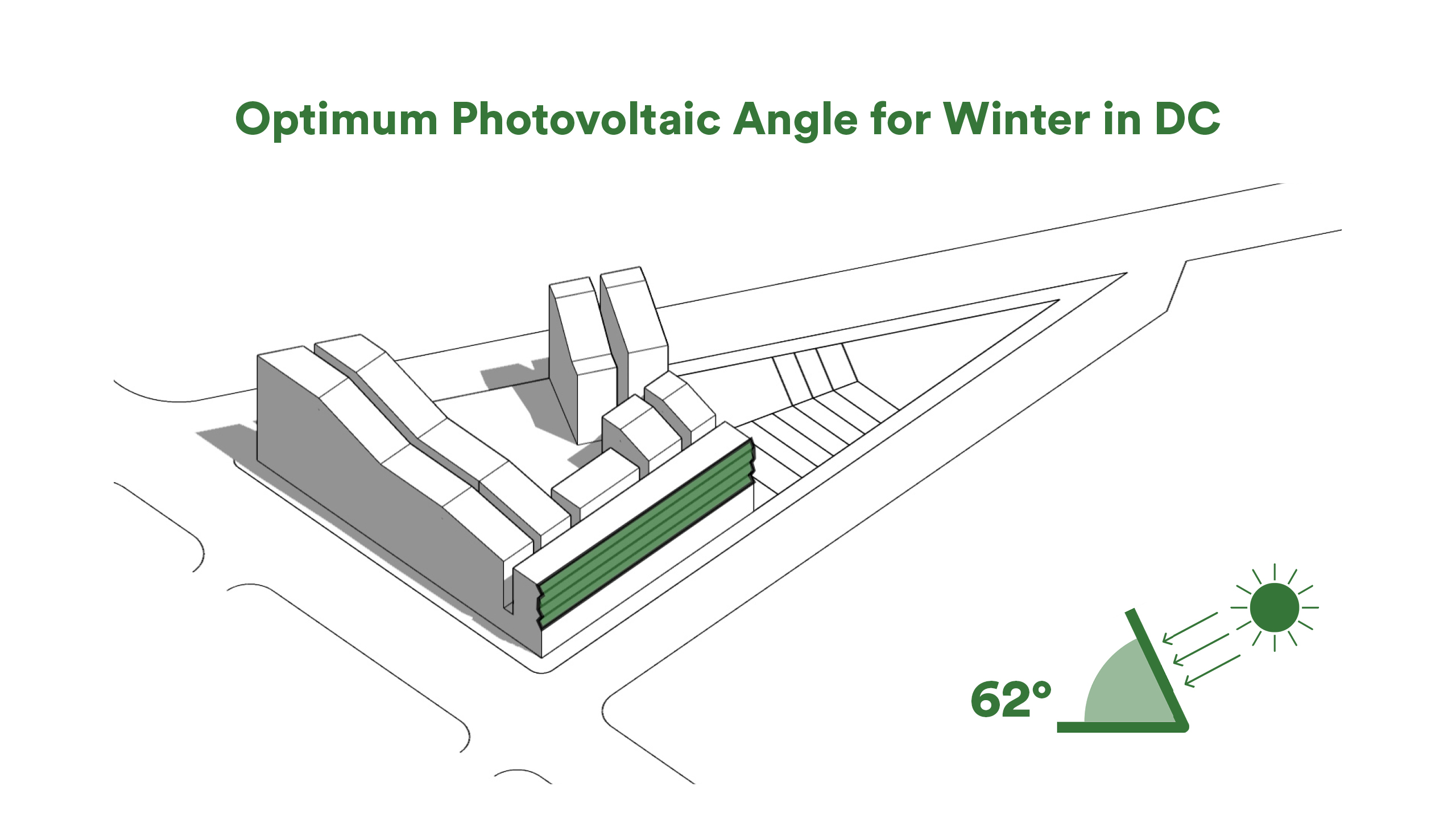
Optimizing the building's form is essential. By designing compact, right sized, and efficient structures, we can minimize surface area and heat loss, enhancing overall energy efficiency and thermal performance. The Branches, a KTGY R+D studio concept, carefully studied several orientations on a site in Washington, D.C., to maximize comfort and efficiency opportunities (figure 1). Once an orientation and mass were selected, that mass was fine tuned to fully embrace natural ventilation, daylighting, and solar heat gain potential, and maximize photovoltaic possibilities for increased resilience and reduced grid reliance (figures 2–5).
A thermal envelope analysis, like the one performed on 330 Distel, an affordable housing project in Los Altos, Calif., provides design teams with insight about how interior spaces will be affected by solar heat gain. Shaping our facades through the study of solar heat gain potential can guide better decision making when it comes to shading placement and interior programming, leading to more thermally comfortable interiors and lower reliance on mechanical heating and cooling.
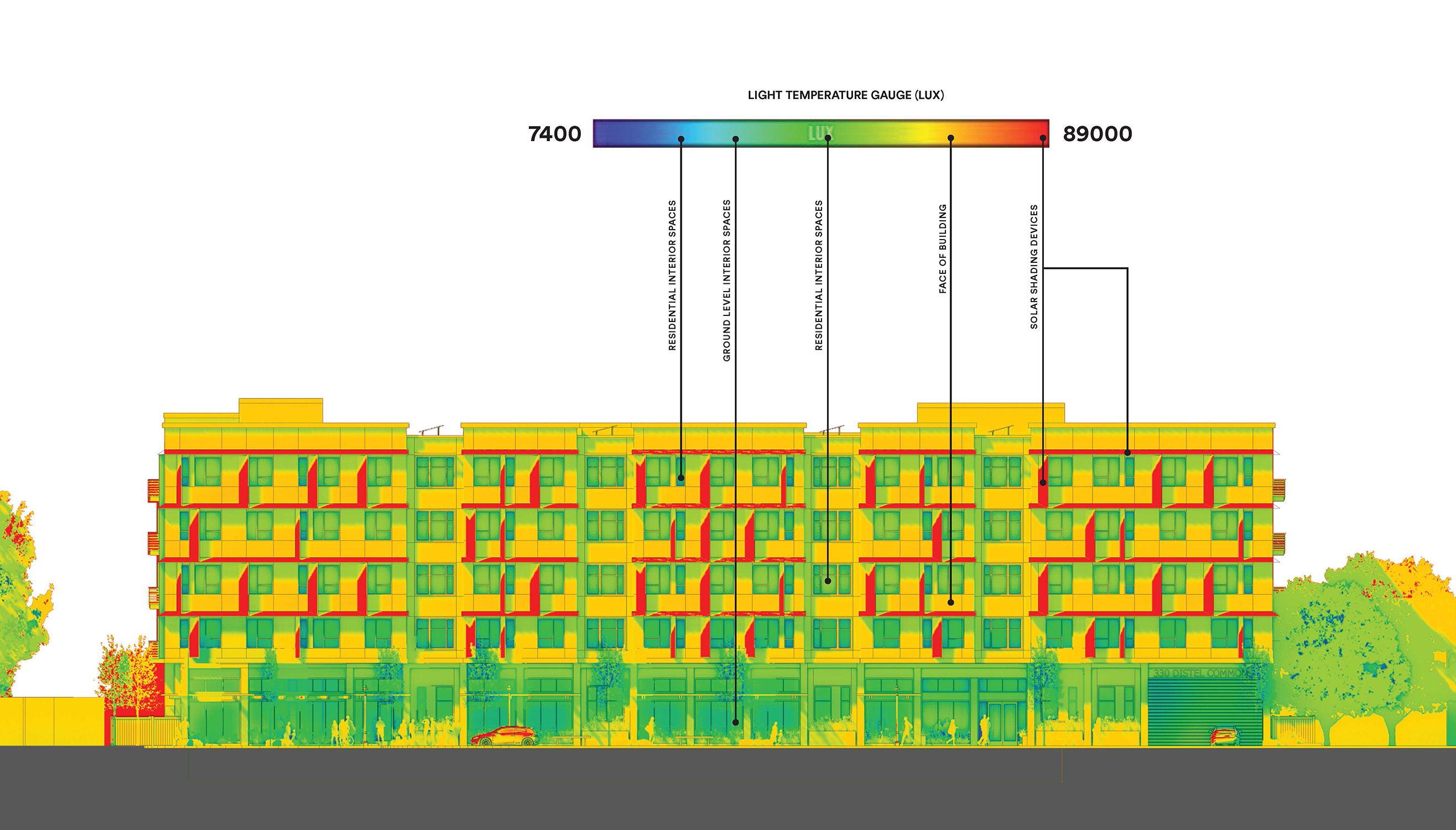
3. Window-to-Wall Ratios: Balancing Light, Views, and Thermal Performance
Windows serve as the connection point between the indoors and outdoors, influencing aesthetics, energy consumption, as well as occupant well-being and satisfaction. Achieving the right balance in window-to-wall ratios is crucial for responsible design. By incorporating optimally sized glazing with strategic placement and shading, project teams can improve natural daylight penetration, reduce glare, and increase or decrease solar heat gain as desired to lower the need for artificial lighting and mechanical cooling and heating, enhance visual comfort, and increase thermal satisfaction.
High-performance windows placed, sized, and shaped using evidence-based design, with low U-values and appropriate shading devices help minimize heat gain in summer and heat loss in winter, optimizing energy efficiency year-round. Additionally, providing occupants with access to views of the surrounding landscape promotes well-being and productivity.

The Branches utilized early design performance analysis to select an optimal window-to-wall ratio for each facade as a part of a holistic high performance design approach. This approach reduced energy use intensity and led to a 61% energy cost savings.
As architects, we have a responsibility to design with resilience, health and efficiency in mind. By integrating sustainable design best practices into our earliest design decisions, from site selection to window-to-wall ratios, we can create buildings that are not only visually stunning but also environmentally friendly and cost-effective. Through thoughtful design and innovation in the built environment, we can build a more sustainable future for generations to come.
More from Author
KTGY | May 15, 2024
Modular adaptive reuse of parking structure grants future flexibility
The shift away from excessive parking requirements aligns with a broader movement, encouraging development of more sustainable and affordable housing.
KTGY | Apr 13, 2024
Former industrial marina gets adaptive reuse treatment
At its core, adaptive reuse is an active reimagining of the built environment in ways that serve the communities who use it. Successful adaptive reuse uncovers the latent potential in a place and uses it to meet people’s present needs.
KTGY | Aug 24, 2023
A multifamily design for multigenerational living
KTGY’s Family Flat concept showcases the benefits of multigenerational living through a multifamily design lens.
KTGY | Jul 27, 2023
Repeatable, supportive housing for the unhoused
KTGY’s R+D concept, The Essential, rethinks supportive housing to support the individual and community with a standardized and easily repeatable design.




